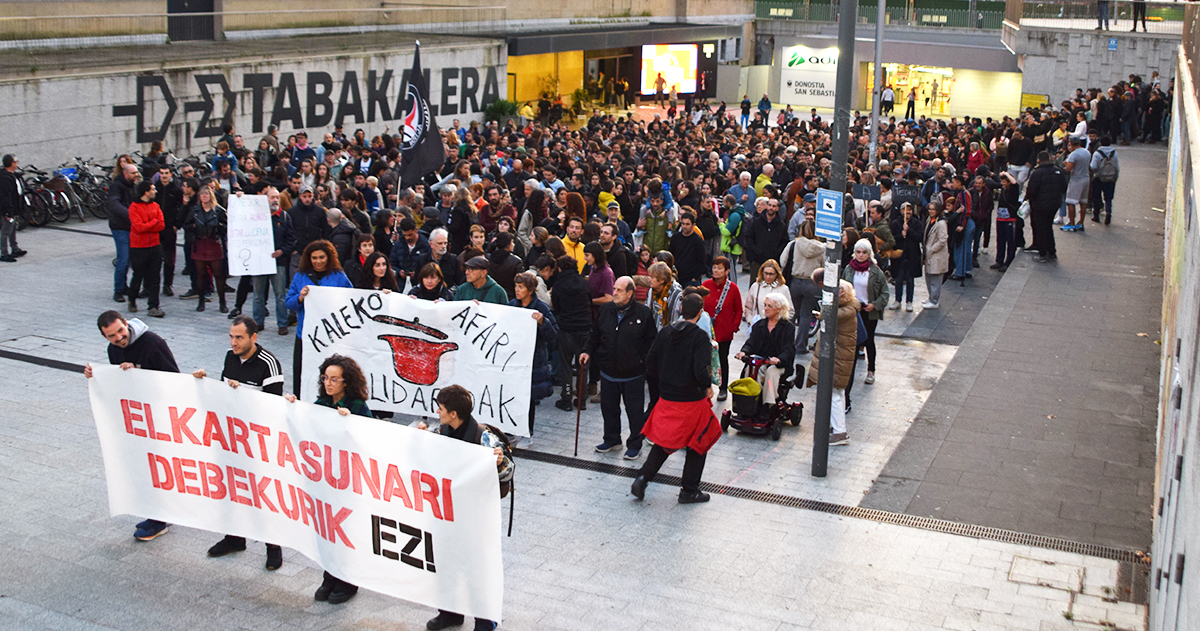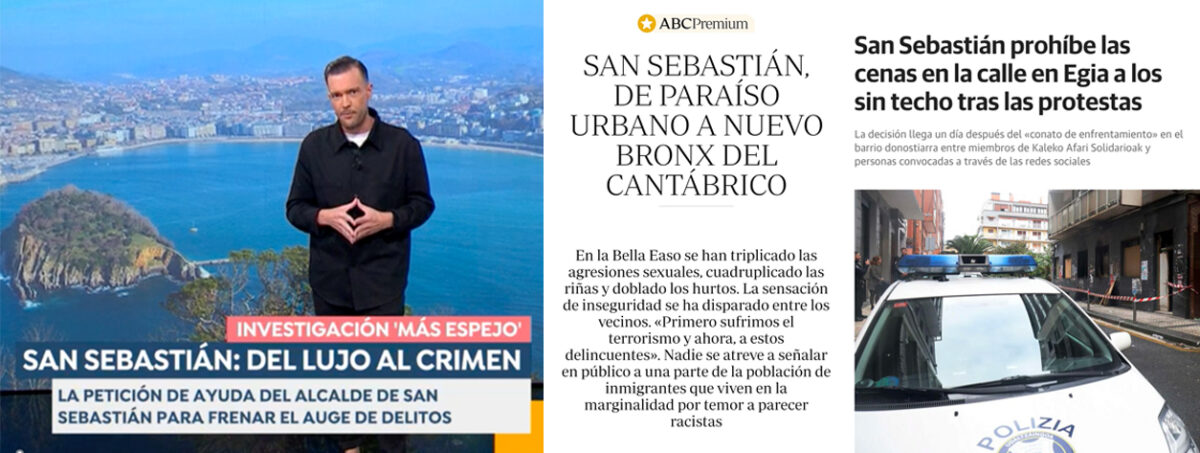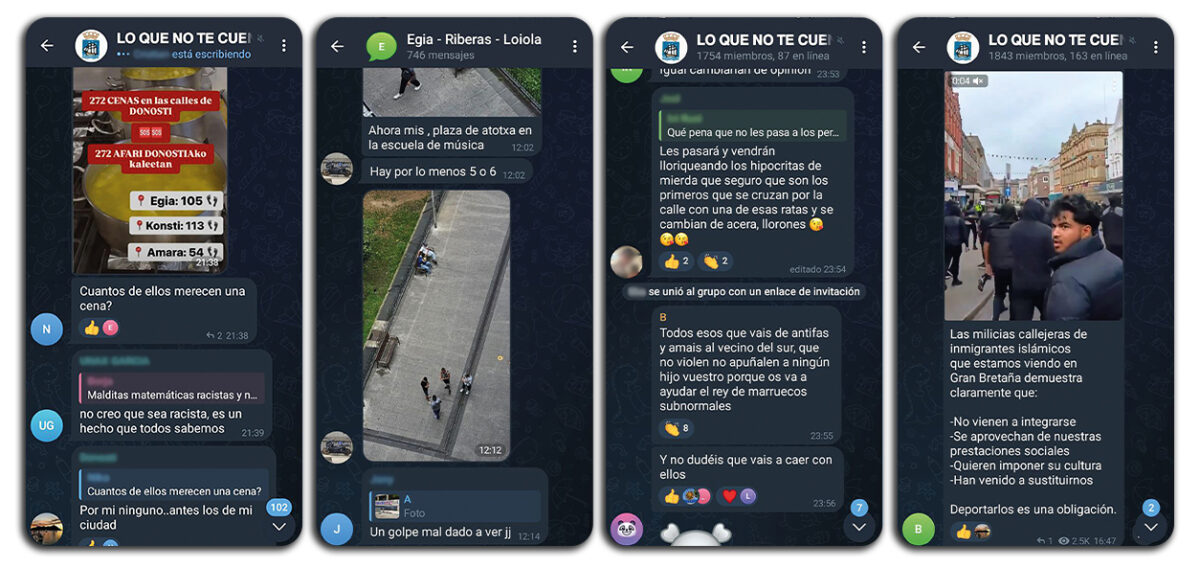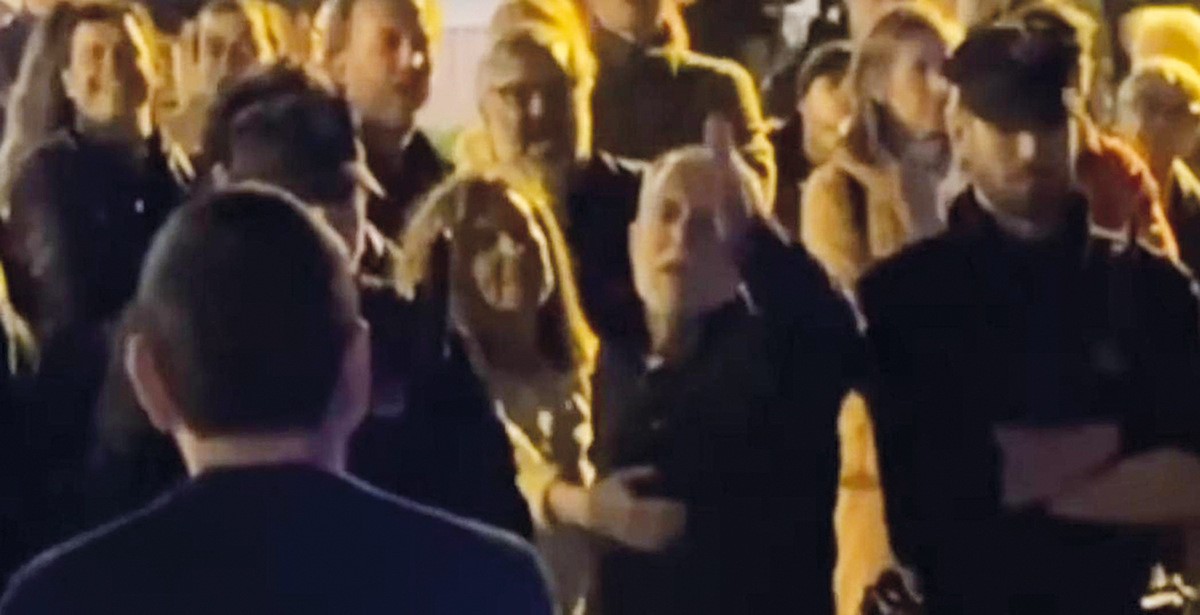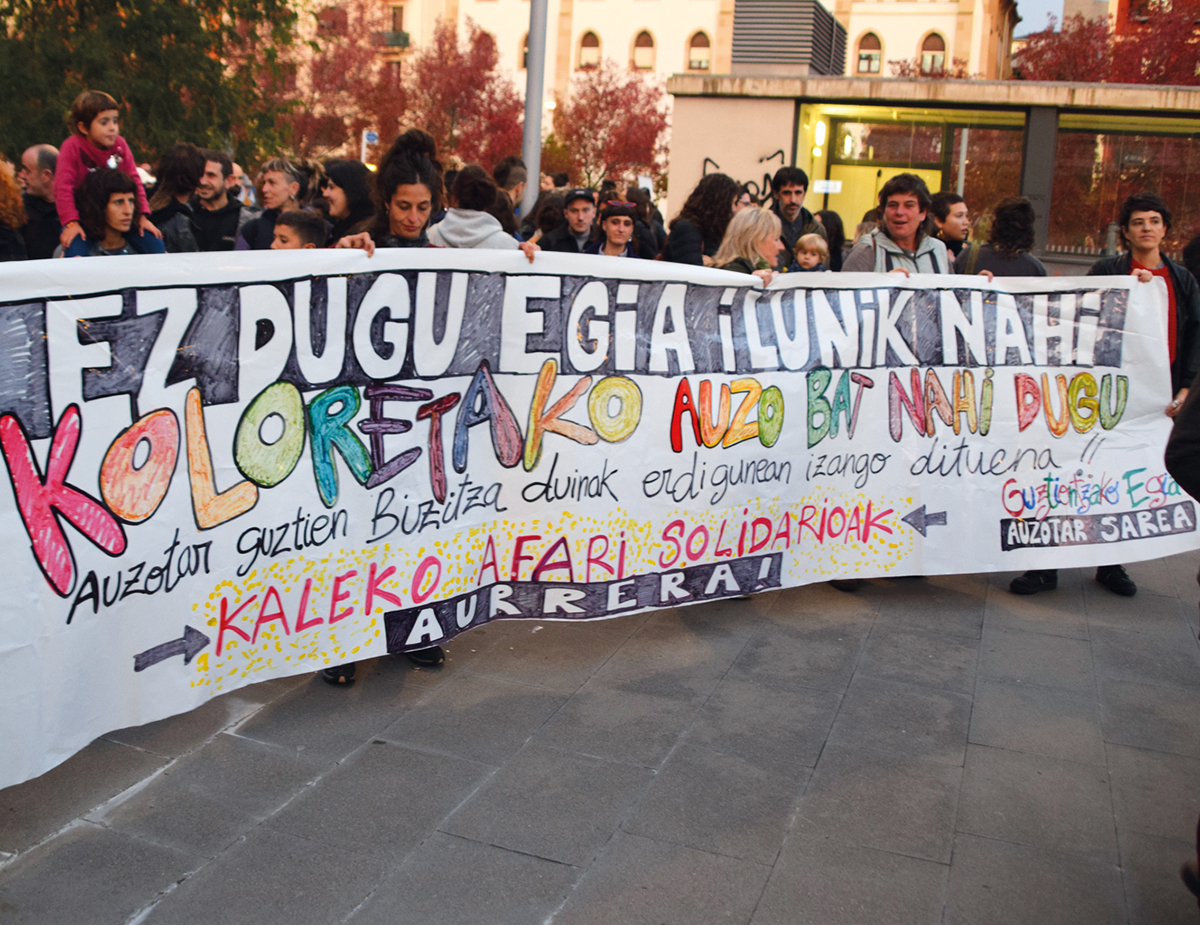If something happens once, in one place, its specific causes must be investigated. If it happens twice, in two different places, it is necessary to study its common causes. If, at the same time, it happens in many places, the structural causes have to be analysed.
The increase in crime and the debate on security is the political issue that is most debated in the centres of Europe. In recent years, it has also been related to migrants. Although the profile of migrants may vary, they are almost always Muslim, whether Arab, Pakistani or sub-Saharan. What happened in Donostia-San Sebastian happened in Vitoria-Gasteiz, it happened in the Catalan countries and it happened this summer in England. And the issue is not yesterday morning.
‘The Birth of a Moral Terror’
On 5 November 1972, three racialized young people attacked mature man Robert Keenan in Birmingham, England. They threw him to the ground and stole several keys, five cigarettes and 30 pence. Two hours later, they returned to the place where the man was, who was brutally stabbed and beaten with a brick, until his death. The press called it a “mischievous robbery,” and they began to use a word that came from the United States: mugging.
Investigator Stuart Hall and his team investigated the relationship between the robbery, the police and the “moral terror” (Policing the Crisis) between 1972-1973. Mugging, the State and Law and Order, 1978) And it is that, although this crime was not "new", it was treated as new and its consequences were multiplied, among other things, by "deterrent convictions", especially for racialized and poor young people. [In Donostia-San Sebastian, social movements have also denounced various police interventions along this line, both in Martutene and in Egia].
These reactions were defined as ‘moral terror’. In his view, the case was not whether or not the crime was a felony, as these were crimes of this kind. That's why we had to look at where that reaction came from. They argued that both thefts and moral terror could only be explained in the context of the problems faced by British capitalism in the early 1970s.
The role of the media
In the study of Stuart Hall and its members, they reflected on the role played by the media: ‘The media is the main and, in many cases, the only source of information (…). The media usually present information on events that occur outside the direct experience of most society. Thus, the media are the main source of information on many important and, on many occasions, unique issues. (…) are involved in the task of making understandable what we might call ‘problematic reality’.
What we are interested in here is the general work of the media in the process of actively forming public opinion. As they explain, the majority of the population has neither direct access nor power over the main decisions that affect their lives; the policy and official opinion are concentrated and the opinion of the citizens is dispersed: ‘In these societies, the media play a role as an intermediary and a connection for the formation of public opinion and its concertation with the actions and opinions of the powerful’. The media, as the main source of information on what is happening, as well as having almost a monopoly on ‘social knowledge’, also control the passage between ‘those who know’ and the structured lack of knowledge of the general public.
According to the Stuart Hall group, the role of the media is to translate the official discourse into ‘popular language’, and then to speak ‘in the name of public discourse’. In the case of Donostia-San Sebastián, it is not so easy. When some issues become ‘moral terror’, such as migration and the right of asylum, the government also questions them. In such cases, the ‘primary definition’ is more likely to come from a mix of press, political opposition and lobbyists: ‘One of the characteristics of moral terror is that the dominant definition of the problem must be accepted or they run the risk of being apologists for the evil’.
Regarding the information of the crimes, one feature stands out: “Normally a employer’s statement is ‘compensated’ with a trade union statement, but a police statement is almost never ‘compensated’ by a professional criminal.” The offender has no right to participate in the consensus of society, because he has infringed the law, or better, because he has violated the law, he has no right to speak.
A person allegedly stolen will therefore have fewer rights than other citizens and, de facto, exceptional legislation and exceptional treatment in public opinion. The same is not true of other crimes. In this way, it is impossible to understand situations. The question is fundamental: Why do the burglaries occur?
According to Brian Roberts from the same research group, recent work on burglaries and street violence pays close attention to the "motivations" of criminals. He says that elements such as the need for cash to comply with the “style of urban culture”, the search for emotions, “masculinity”, “fame”… It is the setback of the consumerist society model, “if you don’t have it, you are no one”. That, mixed with being on the street, and mixed with people who don't even meet basic needs, is a time bomb. In Donostia-San Sebastián we see that there are several data that point to an increase in the number of crimes. But is it not creating the ‘moral terror’ that Stuart Hall mentioned? Digital social networks play a fundamental role.
‘What don’t tell you about Donosti’, fascist counts?
Although the Telegram group was born in August, it has at least three years of history in What you don't know about Donosti Instagram (LQNTCDD). Initially it dealt with general issues about the city, but in recent months it only shares issues related to small crime.
The account serves as an amplifier for ‘moral terror’. The general channel shares the series of information and fake news, and in the groups created to address the problems of the neighborhoods, the locations of young Maghreb. They share photos to warn of where young people are, not whether they are committing crimes or not, but to warn them of their presence. In this way, they contribute to increase social psychosis with the higher dimension of the problem.
Even though racist and fascist content is disseminated in these accounts, its members do not feel that way. However, they share some of the characteristics of the new fascism. Most importantly: dehumanizing language. These are the words used by young migrants to designate them: anchovy, X, young people, being of light, those who do not eat ham… This language comes from far-right social networks so as not to penalize the algorithms and denounce that the media hide the nationality of the criminals. It is the same language used by Desokupa, Frente Obrero and Alvise Pérez.
During the concentration held last Monday in Egia, a number of false information from the far right could be heard: ‘They live from the aid, they come here to rape and to steal, you protect them because they live from the aid’…
In particular, in the city, the social partners have denounced several fascist elements related to security and immigration: Follow and beat the users of the solidary dinners; the organized attack on an area occupied in Trintxerpe in recent weeks; publicly display the faces of activists and journalists; and painted and sticker in Egia and Martutene, for example. Although organized fascism cannot be considered, the death threats against people living in a house occupied by Martutene and the attack with a fake gun carried out in August in Alderdi Eder have to be framed within this violent context. This has been denounced both by neighbourhood associations and by over 30 social partners.
Account related to PP?
In no case is this an account managed by the People’s Party, at least as the party spokesmen have pointed out. In any case, its adherence to the subject is noteworthy. Borja Corominas spoke on this subject: ‘It is true that the networks greatly amplify the things that are published in them. I don't think that profile is alarming, what they do is demonstrate many things that happen in Donostia, through social media. They show a reality that, in many cases, tries to cover up the municipal government." Attachment is not uncommon. The Instagram account has addressed pp agenda issues, and shared several videos from the Corominas campaign since 2022.
The Popular Party wants to be the loudspeaker and alternative to the rumours that have been generated in the city, always within the image of the moderate right. Last week, at the reading you did last week when you banned distribution in Egia, you said: ‘The City Hall must meet these needs (…) [migrants] must be trained to integrate’. In any case, despite his intervention, he did not propose any such initiative in the City Hall, but merely reinforcing the police route.
Those of LQNTQDD are, for the most part, citizens who do not join the parties — it is also a feature of the new fascism — to whom many have surely come close with good intentions. But the hundreds of channels and influencers that the extreme right has on social media do their job. The last, this Tuesday, reading of the situation in Trintxerpe de Marc Lozano, spokesman for the Combative Youth Association. He calls Euskarabia the Basque Country and comes to say, ‘Donostia is literally Africa’. A group of citizens from Trintxerpe talks about a video that follows those of several young migrants: ‘Absolutely legitimate violence against these pieces of shit’. And in the video posted on Instagram, it says: ‘There is no possibility of peaceful paths: this is a war’.
Many citizens do not consider themselves to be racist and only claim ‘security’. However, it is imperative that the modern securitarian discourse integrate with the new racism and fascism: see Meloni Government in Italy, Viktor Orbán in Hungary, Trump in the United States and VOX and Alvise in the Spanish state. The propaganda that links the increase in crime with migration is enormous, and that is what has been denounced in recent weeks as ‘racism’ by different social actors in the city.
New racism
The history of racism has probably developed in line with the history of mankind. However, it has not always been the same. The term racism emerged in the 1930s. After the moral horror of Nazism, not only the left, but also the liberal right opposed racism, and in the middle of the 20th century, liberal anti-razism emerged in the United States. Since then, the multitude has changed and there are already very few who believe in the concept of race, and even that influences the mental characteristics of people. Race, therefore, is a social concept, as a gender, which should not affect intelligence or, of course, the rights of the person.
In any case, C.L.R. Authors such as James, Frantz Fanon, Aime Cesaire or Ángela Davis recall that, in addition to liberal racism, racism must be conceived as an economic structure. It is a social structure that responds to the needs of capitalism itself and classifies human groups to respond in one way or another to the needs of the labor market.
The living conditions that apply to the poor citizens of countries impoverished by the West are those that underpin our system and the social structure that comes from there is the one that is racist: who enters and who does not, and under what conditions. That's why we hear in the neighborhood: ‘I am not against immigration, but they work like us, and if not, their countries’.
There are two ideas behind it: one is to introduce legislation derogating from citizens of different origins and, two, to be exploited in the labour market. Because basically, it seems like something like this is being said. “Come to work, to clean up our grandparents’ wrecks, to bring motorcycle food on rainy Sundays, to build roads, to do overtime in restaurants and, if not, to their countries.”
After solidary dinners?
Another of the fake news that has opened up in the LQNTCDD group and on many other occasions has been the relationship of the Solidarity Dinners of Calle de Egia with the increase in crime. No data confirm this fact; the data provided by the City Council refer to police actions carried out in the district of Egia, and are not directly related to the schedules or the dinners. The fact that in Egia there are more street migrants does not have to do with dinners, but with the architecture of the city: the bus station, which is the source of the minor crimes in all the capitals of the world, the Blas de Otero square of hard architecture without social use, the shelter and electricity offered by Tabakalera…
We have a dangerous context ahead of us. On the pretext of security, the only two measures taken in the last three years, instead of fighting fascist and racist ideas, have been to increase the police presence and ban solidary dinners on the street. In Egia there has not been a street educator, no more food bonuses have been distributed… In short, not a single social solution has been added.
On Sunday there was a massive demonstration against fascism and racism, but apparently no one is considered fascist or racist. Isn't it changing shape? Or, in other words, using fear and ‘moral terror’, taking advantage of the excellent soil to hit the most marginalised in society?

